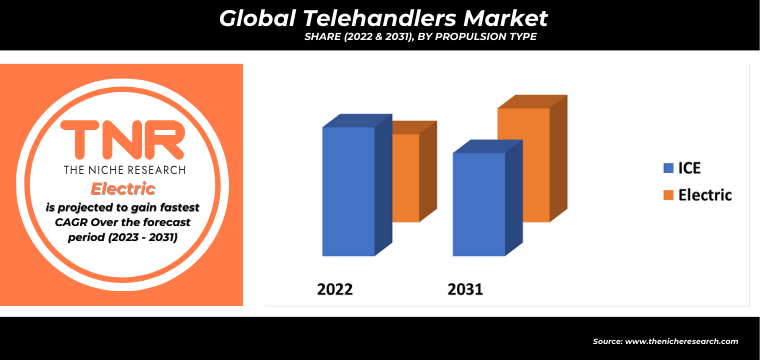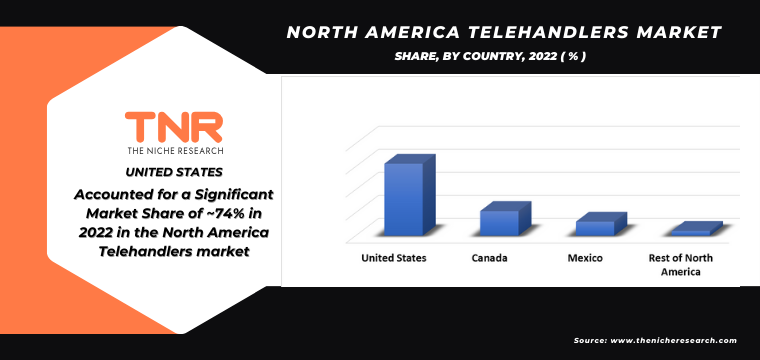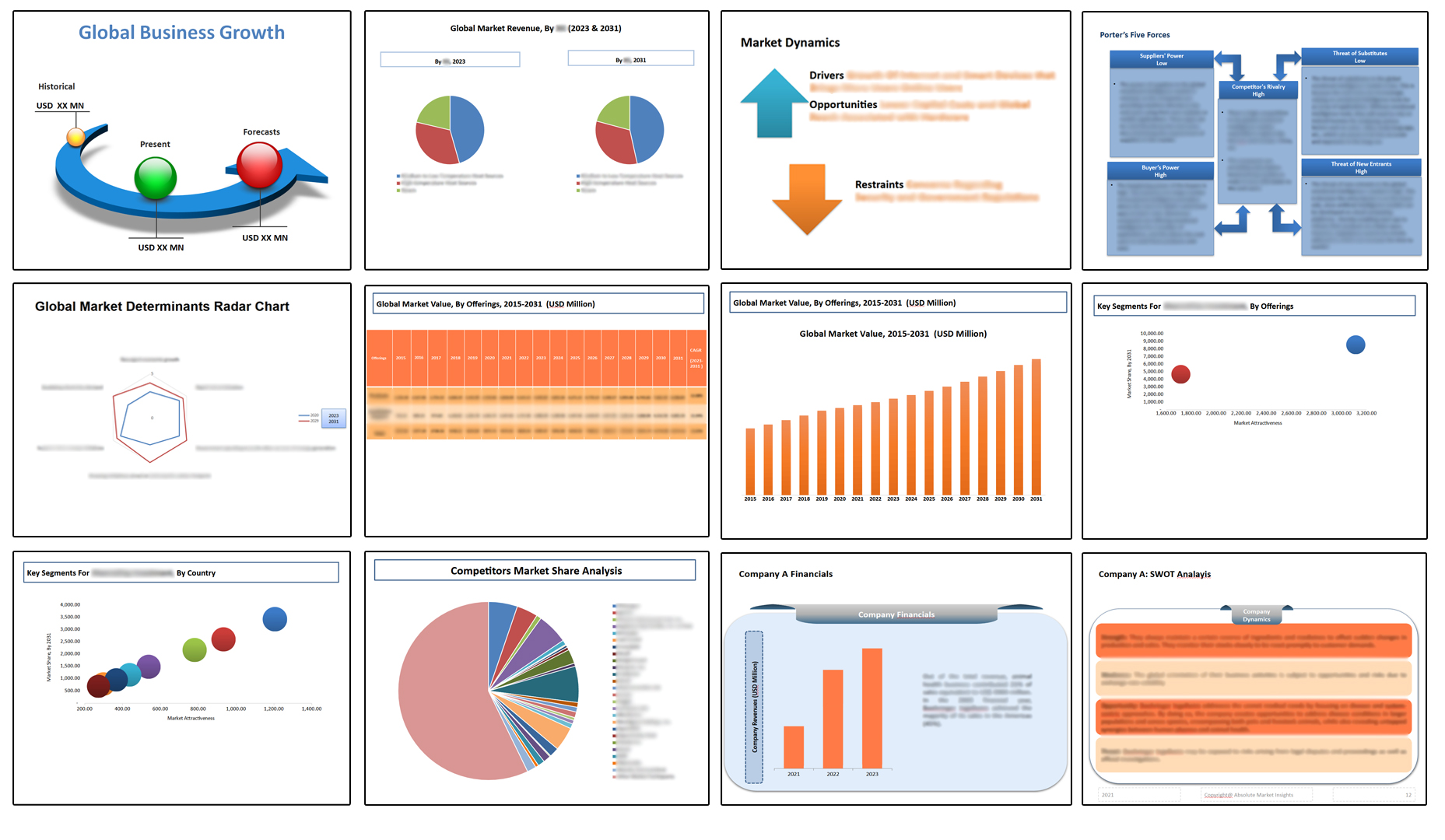Global Telehandlers Market Insights, Growth, Share, Size: By Type, By Size/Lifting Capacity, By Propulsion Type, By End User Industry, By Region & Segmental Forecast, 2023-2031, Comparative Analysis and Trends
- Industry: Construction & Manufacturing
- Report ID: TNR-110-1038
- Number of Pages: 420
- Table/Charts : Yes
- December, 2023
- Base Year : 2024
- No. of Companies : 12+
- No. of Countries : 29
- Views : 10215
- Covid Impact Covered: Yes
- War Impact Covered: Yes
- Formats : PDF, Excel, PPT
Global Telehandlers Market was Valued at US$ 3.98 Bn in 2022, With an Estimated CAGR of 6.1% (2023 – 2031)
Telehandlers play a crucial role in various industries, primarily in construction, agriculture, mining, and logistics. Their versatility and ability to perform multiple tasks make them indispensable in these sectors. Telehandlers, also known as telescopic handlers or boom lifts, are versatile machines extensively utilized across various industries for their exceptional lifting and handling capabilities. These robust pieces of equipment play pivotal roles in construction, agriculture, mining, logistics, and more, owing to their diverse functionalities and adaptability.

Construction End User Dominated the Global Telehandlers Market Growth in 2022
Construction Boom:
The surge in construction activities worldwide, particularly in emerging economies, acted as a catalyst for the demand for telehandlers market. This was fuelled by extensive infrastructure development projects and the need for modern residential and commercial spaces. Telehandlers became indispensable in efficiently handling heavy materials and aiding in various construction tasks.
Efficiency and Productivity Enhancement:
Telehandlers’ versatility played a pivotal role in optimizing construction site operations. These machines, equipped with telescopic booms and various attachments, facilitated lifting, loading, and placement of materials at different heights and distances. This capability significantly contributed to time and labor savings, enhancing overall project efficiency.
Technological Integration:
Advanced technologies integrated into telehandlers, such as IoT, telematics, and GPS systems, provided construction companies with enhanced monitoring and management capabilities. This led to improved productivity, better resource allocation, and minimized downtime, further bolstering their appeal in the construction sector.
Global Telehandlers Market Revenue & Forecast, (US$ Million), 2015 – 2031

Large telehandlers, typically categorized by their lift capacity of over 20,000 pounds, indeed held a substantial market share within the telehandlers market. This segment of heavy-duty machines plays a significant role in various sectors due to their robust capabilities and enhanced lifting capacities. They find extensive use in heavy industries such as construction, mining, and industrial operations where substantial lifting capacities are crucial. For instance:
Construction: They handle heavy loads of construction materials at larger construction sites, aiding in the movement of large pallets, steel beams, and other hefty items.
Mining: These telehandlers assist in transporting bulk materials within mining sites and handling heavy equipment or components.
Industrial Settings: They’re utilized for material handling in manufacturing plants, warehouses, and logistics centers.
For instance, JCB 540-200 is a large telehandler that offers a maximum lift capacity of over 20,000 pounds. It’s utilized in construction, agriculture, and industrial applications due to its high lifting prowess and adaptability with various attachments.
Similarly, Caterpillar TH514D comes with a lift capacity exceeding 20,000 pounds, catering to heavy-duty tasks in construction and industrial settings. Its versatility in handling diverse materials makes it a valuable asset in demanding work environments.

ICE telehandlers, like the JCB 540-200, boast robust power and extended operational ranges, making them ideal for outdoor applications. These machines thrive in environments where the availability of charging infrastructure might be limited. Their quick refuelling process and ability to sustain high power output for extended periods are advantageous, especially in scenarios demanding heavy lifting and continuous operation. Thus, ICE propulsion type accounted for a substantial market share in 2022.
In contrast, electric telehandlers market, exemplified by models like the Manitou MT 732, prioritize environmental sustainability and cost efficiency. They produce zero emissions during operation, contributing to a reduced environmental impact. Their lower operating costs, attributed to the typically cheaper cost of electricity compared to fuel, make them appealing for long-term cost savings. Additionally, electric models operate with reduced noise levels, making them suitable for indoor applications or noise-sensitive environments.

North America held a considerable share of the global telehandlers market in 2022, largely driven by its vibrant construction sector. According to data gathered, the region accounted for a substantial portion of the market demand, owing to extensive construction activities and infrastructural development projects. Caterpillar, a key player in the telehandlers market, has showcased its prowess in North America. The TH357D Ag Handler, designed specifically for the region’s agricultural needs, exemplifies this trend. With its advanced features tailored for precision and efficiency in farming operations, this model has seen significant adoption in the region’s agricultural sector.
In addition, North America stands at the forefront of technological innovation within the telehandlers market. Companies in the region, such as JCB and Manitou, have introduced models equipped with cutting-edge technologies like telematics, IoT integration, and advanced control systems. These innovations have enhanced productivity, efficiency, and safety in telehandler operations. The region’s dominance in market share is often attributed to its robust construction industry, industrialization initiatives & agricultural mechanization, which collectively drives the demand for telehandler equipment.
Competitive Landscape: Global Telehandlers Market:
- AB Volvo
- Caterpillar
- CNH Industrial N.V.
- Doosan Corporation
- HAULOTTE GROUP
- J C Bamford Excavators Ltd.
- Komatsu Ltd.
- L&T Technology Services Limited
- Manitou.com
- Oshkosh Corporation
- Terex Corporation
- Wacker Neuson SE
- Other Market Participants
Global Telehandlers Market Scope
| Report Specifications | Details |
| Market Revenue in 2022 | US$ 3.98 Bn |
| Market Size Forecast by 2031 | US$ 7.1 Bn |
| Growth Rate (CAGR) | 6.1% |
| Historic Data | 2015 – 2021 |
| Base Year for Estimation | 2022 |
| Forecast Period | 2023 – 2031 |
| Report Inclusions | Market Size & Estimates, Market Dynamics, Competitive Scenario, Trends, Growth Factors, Market Determinants, Key Investment Segmentation, Product/Service/Solutions Benchmarking |
| Segments Covered | By Type, By Size/Lifting Capacity, By Propulsion Type, By End User Industry |
| Regions Covered | North America, Europe, Asia Pacific, Middle East & Africa, Latin America |
| Countries Covered | U.S., Canada, Mexico, Rest of North America, France, The UK, Spain, Germany, Italy, Nordic Countries (Denmark, Finland, Iceland, Sweden, Norway), Benelux Union (Belgium, The Netherlands, Luxembourg), Rest of Europe, China, Japan, India, New Zealand, Australia, South Korea, Southeast Asia (Indonesia, Thailand, Malaysia, Singapore, Rest of Southeast Asia), Rest of Asia Pacific, Saudi Arabia, UAE, Egypt, Kuwait, South Africa, Rest of Middle East & Africa, Brazil, Argentina, Rest of Latin America |
| Key Players | AB Volvo, Caterpillar, CNH Industrial N.V., Doosan Corporation, HAULOTTE GROUP, J C Bamford Excavators Ltd., Komatsu Ltd., L&T Technology Services Limited, Manitou.com, Oshkosh Corporation, Terex Corporation, Wacker Neuson SE, Other Market Participants |
| Customization Scope | Customization allows for the inclusion/modification of content pertaining to geographical regions, countries, and specific market segments. |
| Pricing & Procurement Options | Explore purchase options tailored to your specific research requirements |
| C ontact Details |
Consult With Our Expert
Japan (Toll-Free): +81 663-386-8111 South Korea (Toll-Free): +82-808- 703-126 Saudi Arabia (Toll-Free): +966 800-850-1643 United Kingdom: +44 753-710-5080 United States: +1 302-232-5106 E-mail: askanexpert@thenicheresearch.com
|
Global Telehandlers Market
By Type
- Fixed Telehandlers
- Rotating Telehandlers
By Size/Lifting Capacity
- Small Telehandlers (4,500 to 6,000 pounds)
- Medium telehandlers (10,000 to 20,000-pounds)
- Large telehandlers (>20,000)
By Propulsion Type
- ICE
- Electric
By End User Industry
- Construction
- Agriculture
- Mining
- Others
By Region
- North America (U.S., Canada, Mexico, Rest of North America)
- Europe (France, The UK, Spain, Germany, Italy, Nordic Countries (Denmark, Finland, Iceland, Sweden, Norway), Benelux Union (Belgium, The Netherlands, Luxembourg), Rest of Europe)
- Asia Pacific (China, Japan, India, New Zealand, Australia, South Korea, Southeast Asia (Indonesia, Thailand, Malaysia, Singapore, Rest of Southeast Asia), Rest of Asia Pacific)
- Middle East & Africa (Saudi Arabia, UAE, Egypt, Kuwait, South Africa, Rest of Middle East & Africa)
- Latin America (Brazil, Argentina, Rest of Latin America)
Report Coverage & Deliverables

Table of Contents
*Note: This ToC is tentative and can be changed according to the research study conducted during the course of report completion
**Exclusive for Multi-User and Enterprise User.
Global Telehandlers Market
By Type
By Size/Lifting Capacity
By Propulsion Type
By End User Industry
By Region
Note: This ToC is tentative and can be changed according to the research study conducted during the course of report completion
**Exclusive for Multi-User and Enterprise User.
The Niche Research approach encompasses both primary and secondary research methods to provide comprehensive insights. While primary research is the cornerstone of our studies, we also incorporate secondary research sources such as company annual reports, premium industry databases, press releases, industry journals, and white papers.
Within our primary research, we actively engage with various industry stakeholders, conducting paid interviews and surveys. Our meticulous analysis extends to every market participant in major countries, allowing us to thoroughly examine their portfolios, calculate market shares, and segment revenues.
Our data collection primarily focuses on individual countries within our research scope, enabling us to estimate regional market sizes. Typically, we employ a bottom-up approach, meticulously tracking trends in different countries. We analyze growth drivers, constraints, technological innovations, and opportunities for each country, ultimately arriving at regional figures.Our process begins by examining the growth prospects of each country. Building upon these insights, we project growth and trends for the entire region. Finally, we utilize our proprietary model to refine estimations and forecasts.
Our data validation standards are integral to ensuring the reliability and accuracy of our research findings. Here’s a breakdown of our data validation processes and the stakeholders we engage with during our primary research:
- Supply Side Analysis: We initiate a supply side analysis by directly contacting market participants, through telephonic interviews and questionnaires containing both open-ended and close-ended questions. We gather information on their portfolios, segment revenues, developments, and growth strategies.
- Demand Side Analysis: To gain insights into adoption trends and consumer preferences, we reach out to target customers and users (non-vendors). This information forms a vital part of the qualitative analysis section of our reports, covering market dynamics, adoption trends, consumer behavior, spending patterns, and other related aspects.
- Consultant Insights: We tap into the expertise of our partner consultants from around the world to obtain their unique viewpoints and perspectives. Their insights contribute to a well-rounded understanding of the markets under investigation.
- In-House Validation: To ensure data accuracy and reliability, we conduct cross-validation of data points and information through our in-house team of consultants and utilize advanced data modeling tools for thorough verification.
The forecasts we provide are based on a comprehensive assessment of various factors, including:
- Market Trends and Past Performance (Last Five Years): We accurately analyze market trends and performance data from preceding five years to identify historical patterns and understand the market’s evolution.
- Historical Performance and Growth of Market Participants: We assess the historical performance and growth trajectories of key market participants. This analysis provides insights into the competitive landscape and individual company strategies.
- Market Determinants Impact Analysis (Next Eight Years): We conduct a rigorous analysis of the factors that are projected to influence the market over the next eight years. This includes assessing both internal and external determinants that can shape market dynamics.
- Drivers and Challenges for the Forecast Period:Identify the factors expected to drive market growth during the forecast period, as well as the challenges that the industry may face. This analysis aids in deriving an accurate growth rate projection.
- New Acquisitions, Collaborations, or Partnerships: We keep a close watch on any new acquisitions, collaborations, or partnerships within the industry. These developments can have a significant impact on market dynamics and competitiveness.
- Macro and Micro Factors Analysis:A thorough examination of both macro-level factors (e.g., economic trends, regulatory changes) and micro-level factors (e.g., technological advancements, consumer preferences) that may influence the market during the forecast period.
- End-User Sentiment Analysis: To understand the market from the end-user perspective, we conduct sentiment analysis. This involves assessing the sentiment, preferences, and feedback of the end-users, which can provide valuable insights into market trends.
- Perspective of Primary Participants: Insights gathered directly from primary research participants play a crucial role in shaping our forecasts. Their perspectives and experiences provide valuable qualitative data.
- Year-on-Year Growth Trend: We utilize a year-on-year growth trend based on historical market growth and expected future trends. This helps in formulating our growth projections, aligning them with the market’s historical performance.
Research process adopted by TNR involves multiple stages, including data collection, validation, quality checks, and presentation. It’s crucial that the data and information we provide add value to your existing market understanding and expertise. We have also established partnerships with business consulting, research, and survey organizations across regions and globally to collaborate on regional analysis and data validation, ensuring the highest level of accuracy and reliability in our reports.















